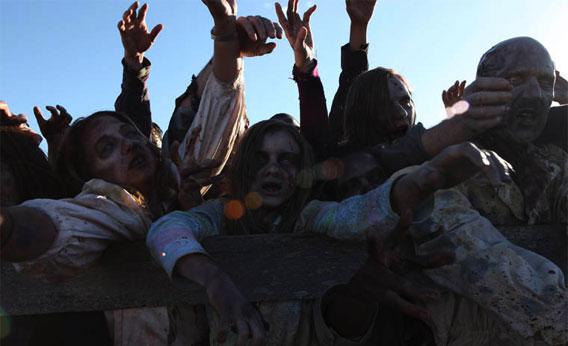What should we expect from science fiction? In a recent Smithsonian article by IO9’s Annalee Newitz, author Neal Stephenson criticized the dystopian cynicism that currently pervades the genre. Instead he calls a more optimistic, realistic approach—fewer zombies and man’s folly-style catastrophes, more creative inventions and solutions. In the spirit of being constructive, he’s also taking action. The first step is an anthology of optimistic, near-term science fiction, forthcoming from William Morrow in 2014, that will tackle this challenge head-on. Smithsonian describes the project, Hieroglyph, as a plan “to rally writers to infuse science fiction with the kind of optimism that could inspire a new generation to, as he puts it, ‘get big stuff done.’ ”
The seed for Hieroglyph was planted at a Future Tense event in 2011, where Stephenson’s lament about the cynicism of contemporary science fiction drew some fire from Arizona State University president Michael Crow. (ASU is a partner in Future Tense with Slate and the New America Foundation.) “You’re the ones who have been slacking off,” Crow responded, leading to a conversation about how to inspire more constructive writing and thinking about the future.
The upshot was Hieroglyph, as well as an evolving partnership with Arizona State. Full disclosure: I’m working with Stephenson to implement this idea on an institutional level at ASU, where we have unusual opportunities to connect creative thinkers and researchers with cutting-edge work across almost every scientific and humanistic discipline.
What I like most about this idea emerges in the last line of the Smithsonian article: “Stephenson’s greatest hope is that young engineers and scientists will absorb ideas from the stories and think, ‘If I start working on this right now, by the time I retire it might exist.’” We are in desperate need of this sort of long view in contemporary culture, where we can barely see beyond the next Apple press conference or election cycle.
Of course it’s possible to take the long view and still be dystopian, as writers from H. G. Wells to Stephenson himself have demonstrated. But what’s really exciting about Hieroglyph is the idea of bringing some constructive criticism to our notions of the future: not just pointing out problems but ponying up some possible solutions. I’ve started to see this kind of maverick thinking in many different areas, from James Cameron’s ambitious new deep-sea torpedo to the moonshot approach of the X-Prize Foundation.
The long-term goal of Hieroglyph is to inspire those sorts of projects, whether in the realms of exploration, sustainability, or fields so new we don’t even have names for them yet. By trying out these ideas in the imagination lab of science fiction, we can explore new technologies in human context. It’s world-building anchored in knowledge of the present and the near future. There’s a place for empty escapism in all genres, including science fiction, but those who wish to change the world through innovation need inspiration as well.
